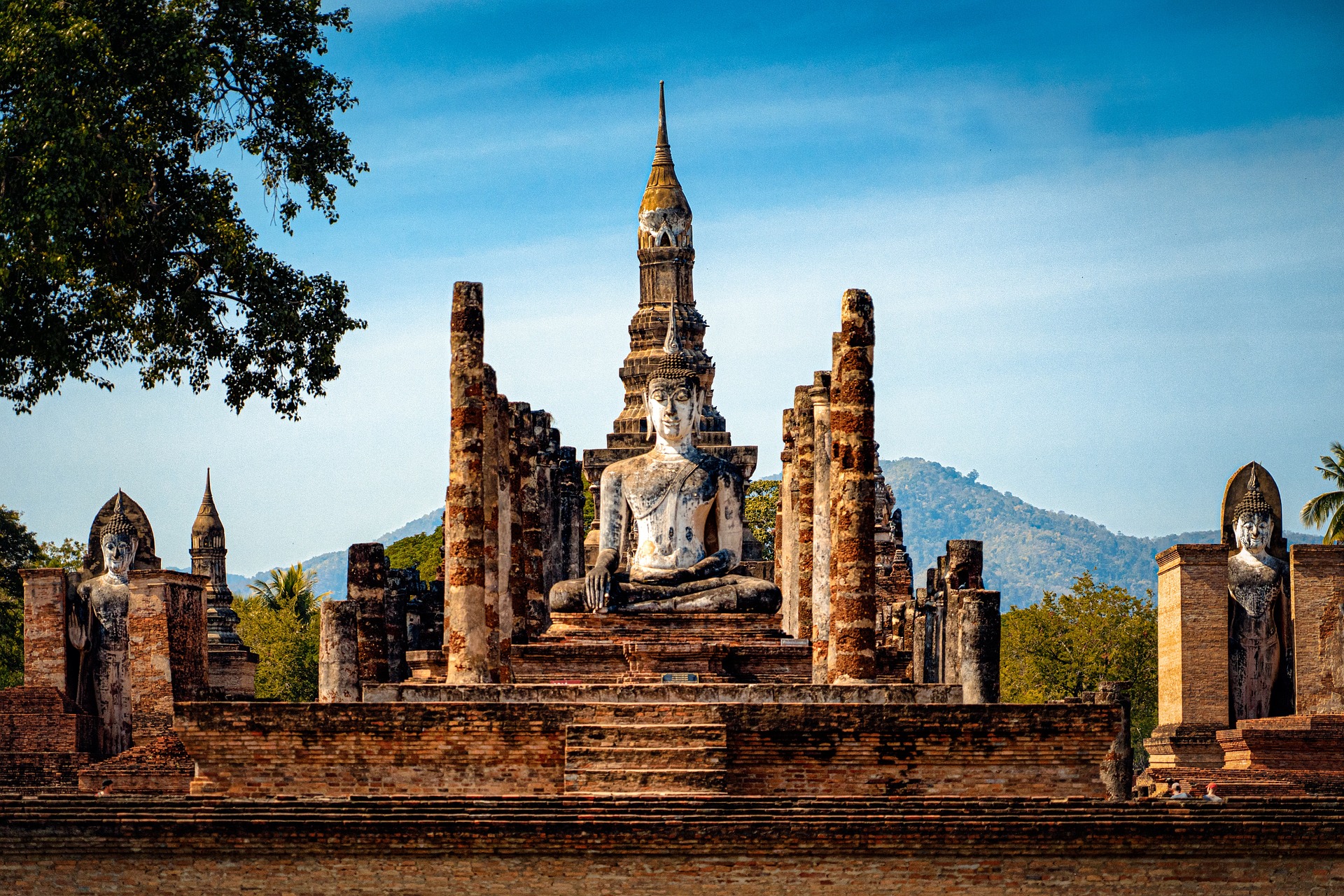History of Thailand

The history of Thailand is a long and complex one that dates back to prehistoric times. The earliest known inhabitants of the region were hunter-gatherers who lived in what is now Thailand more than 10,000 years ago. They were followed by early agricultural societies, such as the Mon and Khmer people, who developed complex societies and kingdoms in the region.
First Tais
The first major group to arrive in Thailand were the Tais, who migrated from southern China around the 10th century AD. The Tais established several small kingdoms in the region, including the Lanna Kingdom in the north and the Sukhothai Kingdom in central Thailand.
Sukhothai Kingdom
The Sukhothai Kingdom was the first major kingdom in Thailand, and was founded in 1238 by King Ramkhamhaeng. Under his rule, the kingdom flourished and became a center of culture and religion in the region. The Sukhothai period is considered a golden age in Thai history, and is known for its impressive architecture, art, and literature.
Ayutthaya Kingdom
The Sukhothai Kingdom was eventually succeeded by the Ayutthaya Kingdom, which was founded in 1350 by King Uthong. The Ayutthaya period was a time of great expansion and prosperity for Thailand, and the kingdom became a major power in Southeast Asia. The Ayutthaya Kingdom was known for its impressive architecture, art, and culture, and was also a center of trade and commerce.
Thonburi and Rattanakosin
In the 18th century, the Ayutthaya Kingdom began to decline, and was eventually invaded and destroyed by the Burmese army in 1767. After the fall of Ayutthaya, Thailand was divided into several smaller kingdoms, including Thonburi and Rattanakosin.
The Thonburi period began in 1767, when General Taksin founded a new capital city on the west bank of the Chao Phraya River. During the Thonburi period, Thailand experienced a period of stability and prosperity, and the kingdom continued to expand and develop.
The Rattanakosin period began in 1782, when King Rama I founded a new capital city on the east bank of the Chao Phraya River. The Rattanakosin period was marked by a period of modernization and reform, and the kingdom became known for its impressive architecture, art, and culture.
Thailand in 19th century
In the late 19th century, Thailand came under pressure from European powers, who were expanding their empires in Southeast Asia. In 1896, Thailand was forced to cede control of several territories to European powers, including Laos and Cambodia.
During World War II, Thailand allied itself with Japan, and allowed Japanese troops to enter the country. After the war, Thailand was forced to make concessions to the Allies, and was eventually granted independence in 1949.
Post war Thailand
In the post-war period, Thailand experienced a period of rapid economic growth and development, and became known as one of the “Asian Tigers” along with other countries such as South Korea and Taiwan. Today, Thailand is a modern and prosperous country, known for its impressive culture, cuisine, and tourism industry.
Text generated by ChatGPT. Image by qimono via Pixabay.
